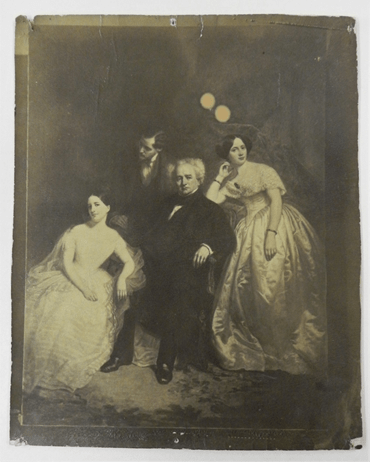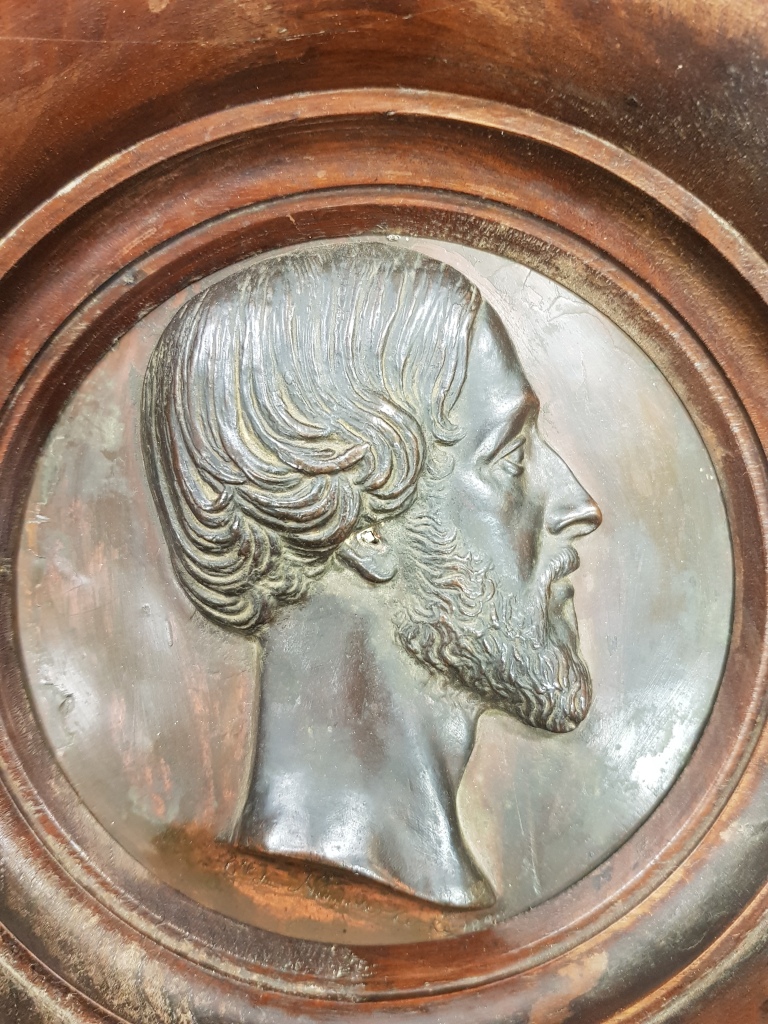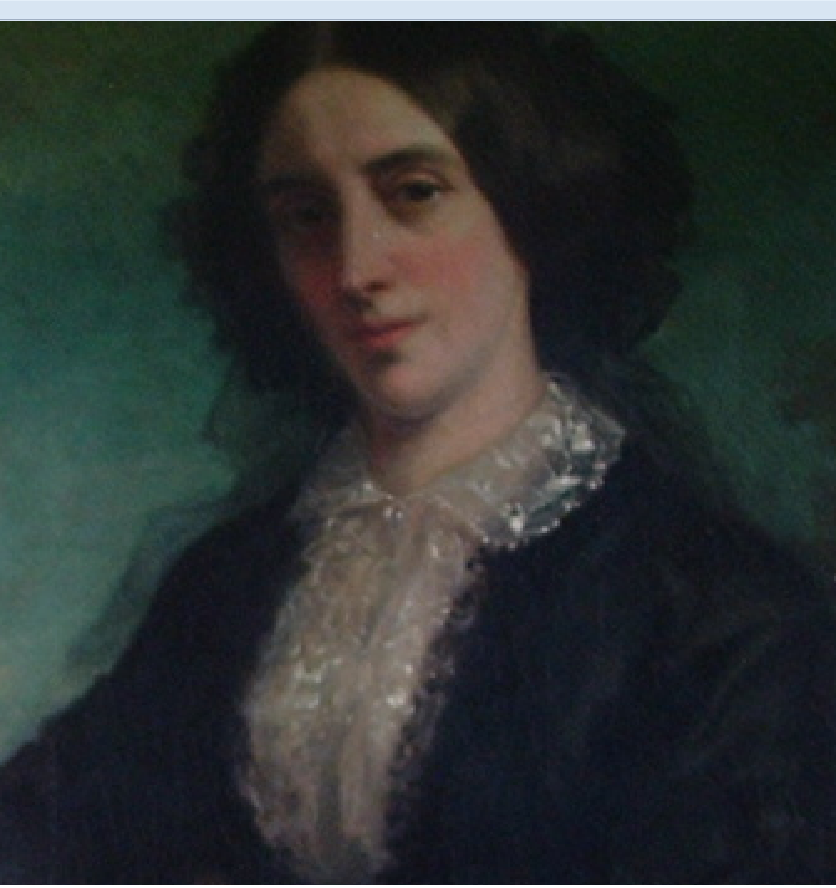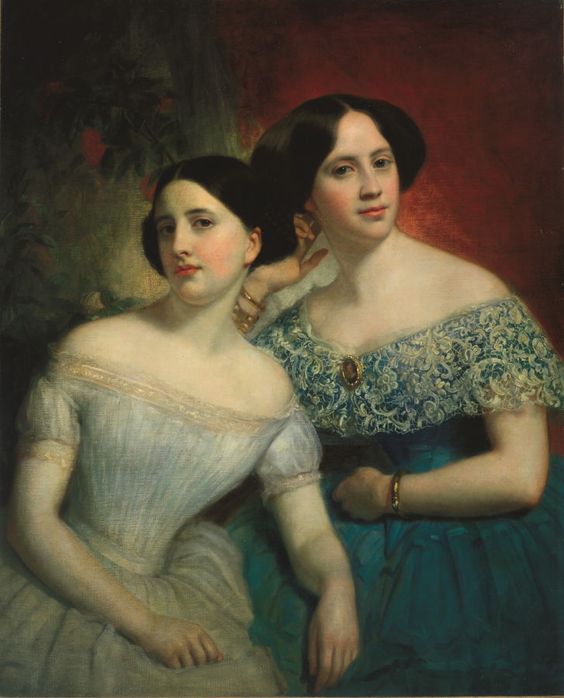The renown artist, G.P. A. (George) Healy had an enduring friendship with his patron, Colonel Thorn. Not only did he paint many portraits of the family, but he had his “own room” in their Sixteenth St residence in the Flatiron district in Manhattan. They met on a voyage to Paris in 1831.
From that first meeting they spent time together on and off over the years. I’ve collected various mentions that create a picture of both their lives.

Healy and Luisa passed frequently through New York
“In New York they would not remain long, although if the Wards and Thorns happened to be there, he must see them, and it would give him a chance to show her his portraits of all the beautiful Thorn girls. Thus it was that in the fall, George again was aboard a big liner on his way to America, and because of the Exhibition, in the crowd of passengers, there were many friends and patrons determined to continue their Healy collection.
Among American passengers, Healy saw the youngest Thorn girl, Ida, perhaps the most beautiful of that bevy of pretty young women, whose portrait he had painted lately. He also caught a glimpse of the lush English beauty, Miss Sneyde, who, he heard, had just been scratched off the list of ladies-in-waiting to the blond Eugenie . . . She knew too well the Emperor’s strong predilection for English fair but warm figures. Yet she kept one of the prettiest Thorn daughters, the Baronne de Pierres, among her galaxy of beauties.”

And in May 1853, they stopped at the Thorn home in New York before sailing back to France.
He wrote in a letter to George Perkins Marsh : Between now & October I shall occupy myself upon a group of Col. Thorn & his two youngest daughters who are pretty girls, this will pay the expenses of the little ones during the winter. And then in 1854… My group of Col. Thorn & three children has turned out well & is now on its way in the Franklin for New york.

From Healey’s own memoirs Reminiscences of a Portrait Painter:
Miss Ida Thorn, was then a very young girl of about sixteen or seventeen. I was also then painting an English young lady, Miss Sneyde, whose beauty was exciting great admiration in Paris. I have always thought that these two lovely girls represented most admirably the beauty of their two countries.
My American (Ida) sitter’s hair was nearly black; her eyes dark. The features were clean cut and exquitely delicate, the figure perfectly graceful.
Colonel Thorn and his family held a distinguished position. Their house in town and their chateau in the country were thrown open with grand hospitality, and the “Colonel Torn” — the “th” being im-possible to pronounce for the French — was popular among all the fashionables of the day. His table was highly appreciated, his horses well known…. The Colonel was a remarkably handsome man, and his numerous daughters were nearly all beautiful.
Thus it was that in the fall George again was aboard a big liner on his way to America, and because of the Exhibition, in the crowd of passengers, there were many friends and patrons determined to continue their Healy collection. Among American passengers, Healy saw the youngest Thorn girl, Ida, perhaps the most beautiful of that bevy of pretty young women, whose portrait he had painted lately. He also caught a glimpse of the lush English beauty, Miss Sneyde, who, he heard, had just been scratched off the list of ladies-in-waiting to the blond Eugenie . . . She knew too well the Emperor’s strong predilection for English fair but warm figures. Yet she kept one of the prettiest Thorn daughters, the Baronne de Pierres, among her galaxy of beauties. All these portraits Healy had painted gave him unexpected prestige during the trip.

They even spent time together in London at Queen Victoria’s coronation in 1837. American’s gathered around the US minister to London, Andrew Stevenson:
Americans gathered around Stevenson — Sully, always gracious; Morse, who praised and congratulated Healy on not having followed his advice; and Colonel Thorn of New York with his dazzling daughters.
Then after Colonel Thorn died, Healy passed through New York again:
Then Philadelphia saw him for a little while, and in October, he was at the Thorns’ New York home at 8 West Sixteenth Street — that massive, square, flat-roofed mansion with its imposing front porch, the entrance flanked by two huge stone dogs. In the yard, a spraying fountain glittered in the sun and a great stone urn filled with flowers held overhanging vines that trailed almost to the ground. In this house Healy always found “his” room ready whenever he passed through the city. Colonel Thorn’s pleasant laughter no longer resounded in the halls and most of the beautiful daughters were away, but the artist enjoyed being surrounded by the many portraits he had painted for them.














I love how Healy crosses and connects my two family branches with the portrait of Step Grandmother Euphemia Van Rensselaer ( Mrs John Church Cruger)..what a small world they all lived in
LikeLike
I love how Healy crosses and connects my two family branches with the portrait of Step Grandmother Euphemia Van Rensselaer ( Mrs John Church Cruger)..what a small world they all lived in
LikeLike
Hi Jacqueline, yes, they all knew each other for sure. And it took so long to get anywhere that if you were on a ship together with not much to do, you had plenty of time to get acquainted. Thorn was one of Healys patrons.
LikeLike
Hi Jacqueline, yes, they all knew each other for sure. And it took so long to get anywhere that if you were on a ship together with not much to do, you had plenty of time to get acquainted. Thorn was one of Healys patrons.
LikeLike